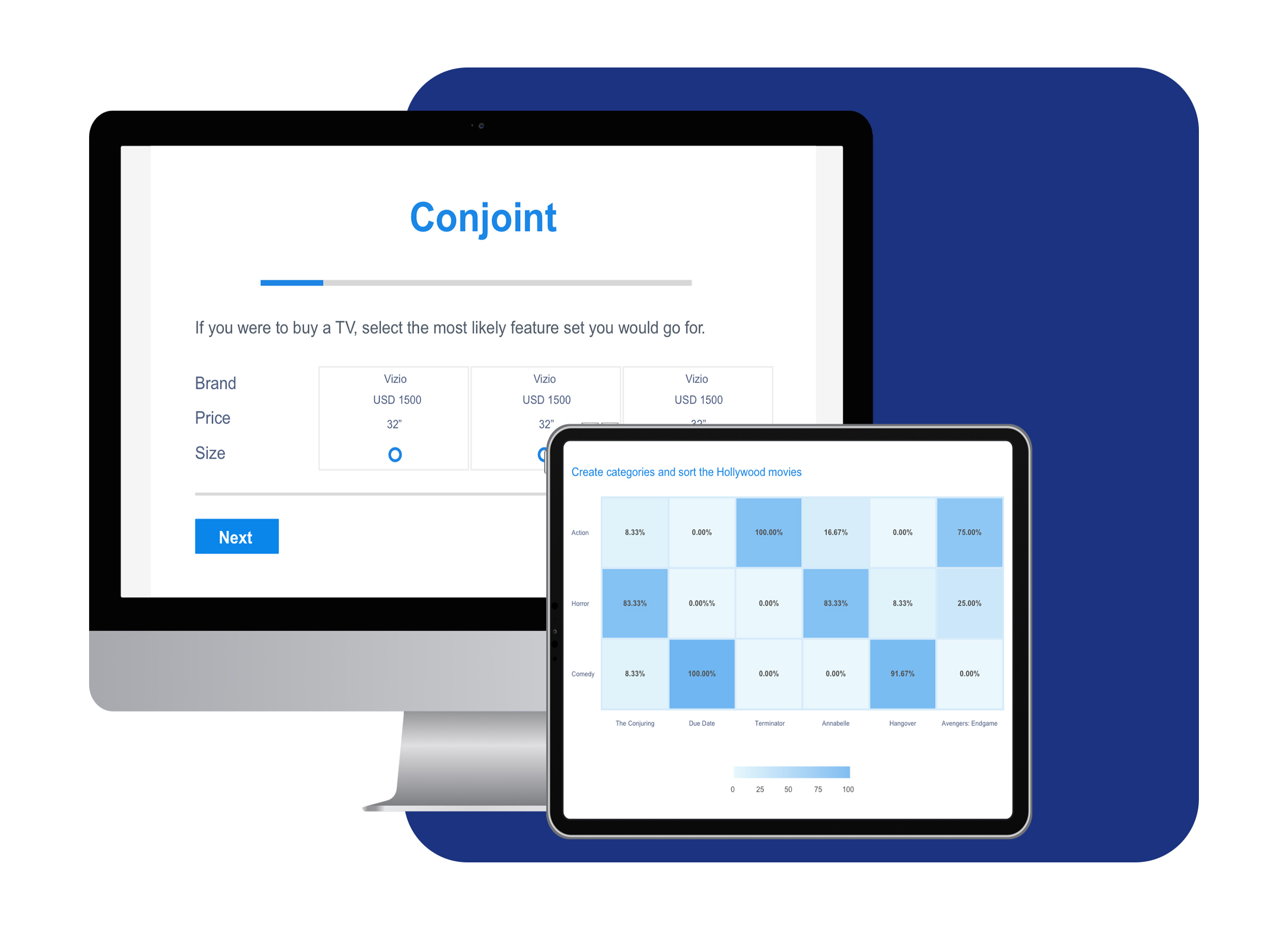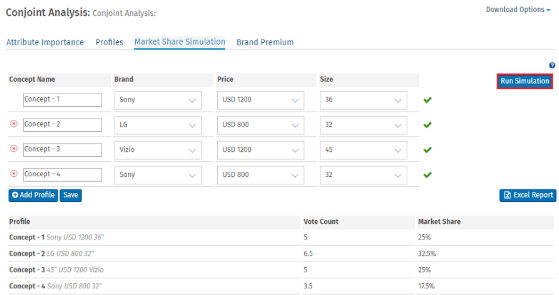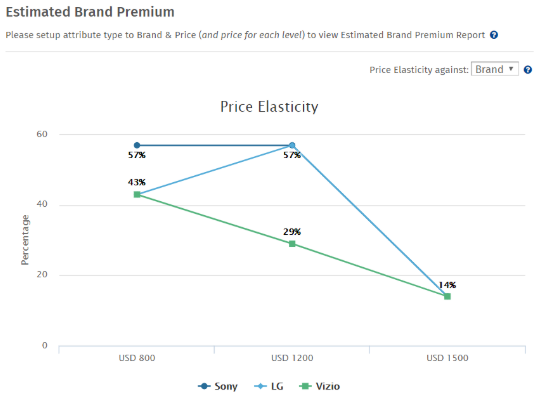The conjoint analysis question helps us understand what is essential for your target audience. It involves how they make trade-offs and what essential features they are not willing to let go.
The conjoint survey question is an advanced question type that market researchers use to present many combinations of product attributes like features, cost, brand, etc. Based on the respondents' answers, market researchers can find out the most liked features by customers and get an idea of pricing. Many times a purchase involves evaluating several parameters that make it complicated. In such a situation, running a conjoint analysis survey can help understand customer psychology.
Types of conjoint analysis commonly used in surveys
Choice-based conjoint analysis: This type of analysis question asks respondents to imitate their purchasing behavior while answering the survey. The respondents submit responses based on the actual products they would choose in real-life, given specific prices and features.
Types of designs for the discrete choice model
QuestionPro offers the below design types for conjoint analysis using the discrete choice model:
Random: This design is a random sample of the possible attribute levels. The survey software will create a unique combination of attributes for the number of tasks per respondent. To know what choices will be presented when your survey is deployed, you can run a conjoint concept simulator.
D-Optimal: While designing experiments for estimating statistical models, optimal designs estimate parameters without bias, and with minimum-variance. D-optimal design runs a set of tests to optimize or investigate the subject under study. The algorithm creates an optimal design for the tasks per respondent and sample size.
Import design: This design type allows designs in the SPSS format to be imported and used by the discrete choice module. For instance, you can import fractional factorial orthogonal designs and use them in QuestionPro surveys.
Example of conjoint analysis in surveys
Consider a smartphone manufacturing company that wants to launch a new phone on the market. They need to know how their target customers value different product attributes such as size, brand, price, etc. Based on the responses, they will create a strategy that will ensure maximum sales.

If the company receives more responses for device 1, they can infer that consumers want higher battery power instead of more cameras.
Adaptive conjoint analysis: This type of conjoint analysis is used in surveys when there are many product features. Researchers generally use it to identify key features that should be included in the product and not the best choice for determining the price.
For instance, the surveyor asks respondents to select their relative preference from several attributes. They assess each pair on a grade point scale.
The choice-based conjoint analysis, also known as discrete-choice conjoint analysis, is the most commonly used type of conjoint analysis survey question.
Data analysis of conjoint survey question
With QuestionPro surveys, you can generate a conjoint analysis report and filter the survey data.
Learn more: Data segmentation and filtering analysis in surveys
The statistical analysis report consists of the below tabs.")
Attribute importance: This tab shows which attributes are more important than others and by what percentage.
Learn more: Conjoint analysis attribute importance

Profiles: It is a set of attributes with different levels. The conjoint analysis software shows respondents various combinations of product features, prototypes, mockups, or pictures created from a combination of levels. Each example is similar enough to be close substitutes but different enough to be distinguishable.
Learn more: Conjoint analysis profiles.

Market simulation: Using this feature, you can forecast the market share of new products that don't exist today. You can also measure the gain or loss in the market share based on the existing products' changes. The conjoint analytics tool simulates the market share of the products to establish a baseline. Then, you can see how the market share changes depending on new products and configurations.
Learn more: Market segmentation simulator.

Estimated brand premium: In many cases, customers are willing to pay extra for a product with the same features as others but with a different brand. This report finds out how much premium a customer will pay for a brand.
Learn more: Brand premium.
Price elasticity: It is the proportional change in demand for a product for change in attributes and price. To view this report, map attribute type to brand & price for each level.
Learn more: Feature attribute type.

Export reports: You can also download below reports in the form of .xls.
Displayed concepts
Conjoint analysis report
Profiles
Uses of conjoint analysis in surveys
Market simulation: Predict the reaction of your potential customers for various scenarios. You can test how the market will behave in response to the price change, new products, or different sales and distribution channels.
Market segmentation: You can filter the survey results based on parameters like location, demographics, question, device type, and more. Hence, you can segment the target market based on the different choices of the consumers.
Advantages of conjoint analytics in surveys
Competitive analysis: Conjoint analysis can understand how your target audience perceives various product attributes and brands.
Easy experimentation: Market researchers can show different combinations of attributes and determine which product or service is likely to be the most successful in the market. This experimentation gives a lot of insights into customers' preferences at a low cost.
Better branding and marketing strategy: Once you know what customers are looking for and are likely to buy, you can better formulate your marketing strategy.
How to add conjoint analysis questions in your surveys?
Learn how to use this survey feature with our help file on the Conjoint Analysis question.
Survey Software Easy to use and accessible for everyone. Design, send and analyze online surveys.
Research Suite A suite of enterprise-grade research tools for market research professionals.
Customer Experience Experiences change the world. Deliver the best with our CX management software.
Employee Experience Create the best employee experience and act on real-time data from end to end.









